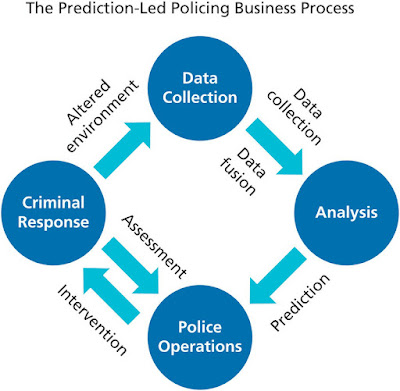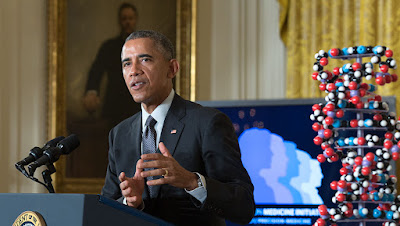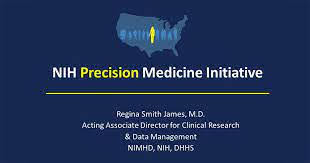Post-scarcity is a controversial idea about a
future global economy in which a radical abundance of products generated at low
cost utilizing sophisticated technologies replaces conventional human labor and
wage payment.
Engineers, futurists, and science fiction writers have
proposed a wide range of alternative economic and social structures for a
post-scarcity world.
Typically, these models rely on hyperconnected systems of
artificial intelligence, robotics, and molecular nanofactories and
manufacturing to overcome scarcity—an pervasive aspect of current capitalist
economy.
In many scenarios, sustainable energy comes from nuclear
fusion power plants or solar farms, while materials come from asteroids mined
by self-replicating smart robots.
Other post-industrial conceptions of socioeconomic
structure, such as the information society, knowledge economy, imagination age,
techno-utopia, singularitarianism, and nanosocialism, exist alongside
post-scarcity as a material and metaphorical term.
Experts and futurists have proposed a broad variety of dates
for the transition from a post-industrial capitalist economy to a post-scarcity
economy, ranging from the 2020s to the 2070s and beyond.
The "Fragment on Machines" unearthed in Karl
Marx's (1818–1883) unpublished notebooks is a predecessor of post-scarcity
economic theory.
Advances in machine automation, according to Marx, would
diminish manual work, cause capitalism to collapse, and usher in a socialist
(and ultimately communist) economic system marked by leisure, artistic and
scientific inventiveness, and material prosperity.
The modern concept of a post-scarcity economy can be traced
back to political economist Louis Kelso's (1913–1991) mid-twentieth-century
descriptions of conditions in which automation causes a near-zero drop in the
price of goods, personal income becomes superfluous, and self-sufficiency and
perpetual vacations become commonplace.
Kelso advocated for more equitable allocation of social and
political power through democratizing capital ownership distribution.
This is significant because in a post-scarcity economy,
individuals who hold capital will also own the technologies that allow for
plenty.
For example, entrepreneur Mark Cuban has predicted that the
first trillionaire would be in the artificial intelligence industry.
Artificial intelligence serves as a constant and pervasive
analytics platform in the post-scarcity economy, harnessing machine productivity.
AI directs the robots and other machinery that transform raw
materials into completed products and run other critical services like
transportation, education, health care, and water supply.
At practically every work-related endeavor, field of industry,
and line of business, smart technology ultimately outperform humans.
Traditional professions and employment marketplaces are
becoming extinct.
The void created by the disappearance of wages and salaries
is filled by a government-sponsored universal basic income or guaranteed
minimum income.
The outcomes of such a situation may be utopian, dystopian,
or somewhere in the between.
Post-scarcity AI may be able to meet practically all human
needs and desires, freeing individuals up to pursue creative endeavors,
spiritual contemplation, hedonistic urges, and the pursuit of joy.
Alternatively, the aftermath of an AI takeover might be a
worldwide disaster in which all of the earth's basic resources are swiftly
consumed by self-replicating robots that multiply exponentially.
K. Eric Drexler (1955–), a pioneer in nanotechnology, coined
the phrase "gray goo event" to describe this kind of worst-case
ecological calamity.
An intermediate result might entail major changes in certain
economic areas but not others.
According to Andrew Ware of the University of Cambridge's
Centre for the Study of Existential Risk (CSER), AI will have a huge impact on
agriculture, altering soil and crop management, weed control, and planting and
harvesting (Ware 2018).
According to a survey of data compiled by the McKinsey
Global Institute, managerial, professional, and administrative tasks are among
the most difficult for an AI to handle—particularly in the helping professions
of health care and education (Chui et al. 2016).
Science fiction writers fantasize of a society when clever
machines churn out most material items for pennies on the dollar.
The matter duplicator in Murray Leinster's 1935 short tale
"The Fourth Dimensional Demonstrator" is an early example.
Leinster invents a duplicator-unduplayer that takes use of
the fact that the four-dimensional world (the three-dimensional physical
universe plus time) has some thickness.
The technology snatches fragments from the past and
transports them to the present.
Pete Davidson, who inherits the equipment from his inventor
uncle, uses it to reproduce a banknote put on the machine's platform.
The note stays when the button is pressed, but it is joined
by a replica of the note that existed seconds before the button was pressed.
Because the duplicate of the bill has the same serial
number, this may be determined.
Davidson uses the equipment to comic effect, duplicating
gold and then (accidentally) removing pet kangaroos, girlfriends, and police
officers from the fourth dimension.
With Folded Hands (1947) by Jack Williamson introduces the
Humanoids, a species of thinking black mechanicals who serve as domestics,
doing all of humankind's labor and adhering to their responsibility to
"serve and obey, and defend men from danger" (Williamson 1947, 7).
The robots seem to be well-intentioned, but they are slowly
removing all meaningful work from human humans in the village of Two Rivers.
The Humanoids give every convenience, but they also
eliminate any human risks, such as sports and alcohol, as well as any
motivation to accomplish things for themselves.
Home doorknobs are even removed by the mechanicals since people
should not have to make their own entries and exits.
People get anxious, afraid, and eventually bored.
For a century or more, science fiction writers have
envisaged economies joined together by post-scarcity and vast possibility.
When an extraterrestrial species secretly dumps a score of
matter duplicating machines on the planet, Ralph Williams' novella
"Business as Usual, During Alterations" (1958) investigates human
greed.
Each of the electrical machines, which have two metal pans
and a single red button, is the same.
"A press of the button fulfills your heart's
wish," reads a written caution on the duplicator.
It's also a chip embedded in human society's underpinnings.
It will be brought down by a few billion of these chips.
It's all up to you" (Williams 1968, 288).
Williams' narrative is set on the day the gadget emerges,
and it takes place in Brown's Department Store.
John Thomas, the manager, has exceptional vision,
understanding that the robots would utterly disrupt retail by eliminating both
scarcity and the value of items.
Rather of attempting to create artificial scarcity, Thomas
comes up with the concept of duplicating the duplicators and selling them on
credit to clients.
He also reorients the business to offer low-cost items that
can be duplicated in the pan.
Instead of testing humanity's selfishness, the
extraterrestrial species is presented with an abundant economy based on a
completely different model of production and distribution, where distinctive
and varied items are valued above uniform ones.
The phrase "Business as Usual, During Changes"
appears on occasion in basic economics course curricula.
In the end, William's story is similar to the long-tail
distributions of more specialist products and services described by authors on
the economic and social implications of high technology like Clay Shirky, Chris
Anderson, and Erik Brynjolfsson.
In 1964, Leinster returned with The Duplicators, a short
book. In this novel, the planet Sord Three's human civilization
has lost much of its technological prowess, as well as all electrical devices,
and has devolved into a rough approximation of feudal society.
Humans are only able to utilize their so-called dupliers to
produce necessary items like clothing and silverware.
Dupliers have hoppers where vegetable matter is deposited
and raw ingredients are harvested to create other, more complicated
commodities, but they pale in comparison to the originals.
One of the characters speculates that this may be due to a
missing ingredient or components in the feedstock.
It's also self-evident that when poor samples are repeated,
the duplicates will be weaker.
The heavy weight of numerous, but poor products bears down
on the whole community.
Electronics, for example, are utterly gone since machines
cannot recreate them.
When the story's protagonist, Link Denham, arrives on the
planet in unduplicated attire, they are taken aback.
"And dupliers released to mankind would amount to
treason," Denham speculates in the story, referring to the potential
untold wealth as well as the collapse of human civilization throughout the
galaxy if the dupliers become known and widely used off the planet: "And
dupliers released to mankind would amount to treason." If a gadget exists
that can accomplish every kind of job that the world requires, people who are
the first to own it are wealthy beyond their wildest dreams.
However, pride will turn wealth into a marketable narcotic.
Men will no longer work since their services are no longer
required.
Men will go hungry because there is no longer any need to
feed them" (Leinster 1964, 66–67).
Native "uffts," an intelligent pig-like species
trapped in slavery as servants, share the planet alongside humans.
The uffts are adept at gathering the raw materials needed by
the dupliers, but they don't have direct access to them.
They are completely reliant on humans for some of the
commodities they barter for, particularly beer, which they like.
Link Denham utilizes his mechanical skill to unlock the
secrets of the dupliers, allowing them to make high-value blades and other
weapons, and finally establishes himself as a kind of Connecticut Yankee in King
Arthur's Court.
Humans and uffts equally devastate the environment as they
feed more and more vegetable stuff into the dupliers to manufacture the
enhanced products, too stupid to take full use of Denham's rediscovery of the
appropriate recipes and proportions.
This bothers Denham, who had hoped that the machines could
be used to reintroduce modern agricultural implements to the planet, after
which they could be used solely for repairing and creating new electronic goods
in a new economic system he devised, dubbed "Householders for the
Restoration of the Good Old Days" by the local humans.
The good times are ended soon enough, as humans plan the
re-subjugation of the native uffts, prompting them to form a Ufftian Army of
Liberation.
Link Denham deflects the uffts at first with generous
helpings of bureaucratic bureaucracy, then liberates them by developing
beer-brewing equipment privately, ending their need on the human trade.
The Diamond Age is a Hugo Award-winning bildungsroman about
a society governed by nanotechnology and artificial intelligence, written by
Neal Stephenson in 1995.
The economy is based on a system of public matter compilers,
which are essentially molecular assemblers that act as fabricating devices and
function similarly to K. Eric Drexler's proposed nanomachines in Engines of Creation
(1986), which "guide chemical reactions by positioning reactive molecules
with atomic precision" (Drexler 1986, 38).
All individuals are free to utilize the matter compilers,
and raw materials and energy are given from the Source, a massive hole in the
earth, through the Feed, a centralized utility system.
"Whenever Nell's clothing were too small, Harv would
toss them in the deke bin and have the M.C. sew new ones for her."
Tequila would use the M.C. to create Nell a beautiful outfit with lace and ribbons if
they were going somewhere where they would see other parents with other
girls" (Stephenson 1995, 53).
Nancy Kress's short tale "Nano Comes to Clifford
Falls" (2006) examines the societal consequences of nanotechnology, which
gives every citizen's desire.
It recycles the old but dismal cliche of humans becoming
lazy and complacent when presented with technology solutions, but this time it
adds the twist that males in a society suddenly free of poverty are at risk of
losing their morals.
"Printcrime" (2006), a very short article initially
published in the magazine Nature by Cory Doctorow, who, by no coincidence,
releases free works under a liberal Creative Commons license.
The tale follows Lanie, an eighteen-year-old girl who
remembers the day ten years ago when the cops arrived to her father's
printer-duplicator, which he was employing to illegally create pricey,
artificially scarce drugs.
One of his customers basically "shopped" him,
alerting him of his activities.
Lanie's father had just been released from jail in the
second part of the narrative.
He's immediately inquiring where he can "get a printer
and some goop," acknowledging that printing "rubbish" in the
past was a mistake, but then whispers to Lanie, "I'm going to produce more
printers." There are a lot more printers.
There's one for everyone. That is deserving of incarceration.
That's worth a lot." Makers (2009), also by Cory
Doctorow, is about a do-it-yourself (DIY) maker subculture that hacks
technology, financial systems, and living arrangements to "find means of
remaining alive and happy even while the economy is going down the
toilet," as the author puts it (Doctorow 2009).
The impact of a contraband carbon nanotube printing machine
on the world's culture and economy is the premise of pioneering cyberpunk author
Bruce Sterling's novella Kiosk (2008).
Boroslav, the protagonist, is a popup commercial kiosk
operator in a poor world nation, most likely a future Serbia.
He begins by obtaining a standard quick prototyping 3D
printer.
Children buy cards to program the gadget and manufacture
waxy, nondurable toys or inexpensive jewelry.
Boroslav eventually ends himself in the hands of a smuggled
fabricator who can create indestructible objects in just one hue.
Those who return their items to be recycled into fresh raw
material are granted refunds.
He is later discovered to be in possession of a gadget
without the necessary intellectual property license, and in exchange for his
release, he offers to share the device with the government for research
purposes.
However, before handing up the gadget, he uses the
fabricator to duplicate it and conceal it in the jungles until the moment is
right for a revolution.
The expansive techno-utopian Culture series of books
(1987–2012) by author Iain M. Banks involves superintelligences living alongside humans
and aliens in a galactic civilization marked by space socialism and a
post-scarcity economy.
Minds, benign artificial intelligences, manage the Culture
with the assistance of sentient drones.
The sentient living creatures in the novels do not work
since the Minds are superior and offer all the citizens need.
As the biological population indulges in hedonistic
indulgences and faces the meaning of life and fundamental ethical dilemmas in a
utilitarian cosmos, this reality precipitates all kinds of conflict.
~ Jai Krishna Ponnappan
Find Jai on Twitter | LinkedIn | Instagram
You may also want to read more about Artificial Intelligence here.
See also:
Ford, Martin; Technological Singularity; Workplace Automation.
References & Further Reading:
Aguilar-Millan, Stephen, Ann Feeney, Amy Oberg, and Elizabeth Rudd. 2010. “The Post-Scarcity World of 2050–2075.” Futurist 44, no. 1 (January–February): 34–40.
Bastani, Aaron. 2019. Fully Automated Luxury Communism. London: Verso.
Chase, Calum. 2016. The Economic Singularity: Artificial Intelligence and the Death of Capitalism. San Mateo, CA: Three Cs.
Chui, Michael, James Manyika, and Mehdi Miremadi. 2016. “Where Machines Could Replace Humans—And Where They Can’t (Yet).” McKinsey Quarterly, July 2016. http://pinguet.free.fr/wheremachines.pdf.
Doctorow, Cory. 2006. “Printcrime.” Nature 439 (January 11). https://www.nature.com/articles/439242a.
Doctorow, Cory. 2009. “Makers, My New Novel.” Boing Boing, October 28, 2009. https://boingboing.net/2009/10/28/makers-my-new-novel.html.
Drexler, K. Eric. 1986. Engines of Creation: The Coming Era of Nanotechnology. New York: Doubleday.
Kress, Nancy. 2006. “Nano Comes to Clifford Falls.” Nano Comes to Clifford Fall and Other Stories. Urbana, IL: Golden Gryphon Press.
Leinster, Murray. 1964. The Duplicators. New York: Ace Books.
Pistono, Federico. 2014. Robots Will Steal Your Job, But That’s OK: How to Survive the Economic Collapse and Be Happy. Lexington, KY: Createspace.
Saadia, Manu. 2016. Trekonomics: The Economics of Star Trek. San Francisco: Inkshares.
Stephenson, Neal. 1995. The Diamond Age: Or, a Young Lady’s Illustrated Primer. New York: Bantam Spectra.
Ware, Andrew. 2018. “Can Artificial Intelligence Alleviate Resource Scarcity?” Inquiry Journal 4 (Spring): n.p. https://core.ac.uk/reader/215540715.
Williams, Ralph. 1968. “Business as Usual, During Alterations.” In 100 Years of Science Fiction, edited by Damon Knight, 285–307. New York: Simon and Schuster.
Williamson, Jack. 1947. “With Folded Hands.” Astounding Science Fiction 39, no. 5 (July): 6–45.























